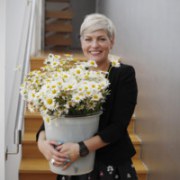Using the terms and tools of magic, metaphysics, superstition, alternative truth, healing, miracles in science communication can spur our audience's imagination and make them wonder what it is they have just seen and how it happened. Surprising intermezzos stand out and stick in our memories. Used in appropriate dose, these discrepant or counterintuitive events can serve to "season" our communication.
Science communication techniques using discrepant events will be demonstrated by the speakers, after which we count on you, dear participants, to share your experiences during a debate.
Surprise yourself and attend this session. We know you will: it is written in your horoscope!
Facilitator
Session speakers
Research Editor
Ljubljana
Slovenia
THINKING IS SO IMPORTANT!
Most visitors expect that everything they read, see or hear during their visit of science centres, museums and similar institutions is completely true. The venue matters!
Visitors certainly get some new insights and information during their visit. But instead of plainly presenting “the truth” on the plate, this could be done in a way that would encourage people to think about new knowledge and rethink the one they already hold dear. Perhaps even try some things for themselves - like Galileo did when he threw a wooden and a lead ball from the tower in Pisa and saw that they fell on the ground at the same time.
Using a little twist (in the right way) on things people think they understand makes them rethink what they know. You probably know that drinking water does not change your voice, that liquids and gases do compress, and that you cannot bend light with your hand. Or can you? Perhaps experiments shown during the presentation will make you think again.
Sometimes it’s enough to simply state the wrong fact. At other times one could use props and deliberately falsify the result in order to trigger a debate and critical thinking. Do you consider this ethical? Too Machiavellian?
One or more things written above are completely wrong!
How will you know which one(s)?
Did they spur your interest when you read them or did you simply “eat” the facts?
Public Engagement Associate
Bristol
United Kingdom
Discrepant and counterintuitive events are very often used by science communicators to surprise their audience and gain attention. But can we use them to start a conversation with the audience? To start building a model together? These discrepancies may even lead to a disagreement within the audience, with divergent views and theories. This situation offers a wonderful opportunity to start using a peer-reviewed process, and engage in an inquiry process within a science show. Two questions remain however: can we refrain ourselves from giving the « good answer » to resolve the discrepancy? Should we give this right answer - or in other words, do we want primarily to convey a sense of true knowledge or a sense of scientific exploration? Last, one may wonder how we can move from discrepant events to normal events, and trigger curiosity, interrogation and exploration on things that we usually never question…
Researcher / Speaker
City University of New York - retired
Anecdotal evidence points to the efficacy of using DID (discrepant event demonstrations) for gaining the interest of less than interested observers and enhancing the interest in the rest of the audience in scientific demonstrations and experiments.
There are at least two forms in which these demonstrations can be presented.
a) the presentation of an observable phenomenon such as one involving air pressure, center of gravity, perception, sound, light, mathematics … where the methodology behind the demonstration is not apparent to the observer. The purpose of this is: to give a "wow" effect to the onlookers that will leave them seeking an answer to how the demo was accomplished.
b) a staged presentation of an effect that will highlight an ordinarily non-demonstrable phenomenon. This may include demos of quantum tunnelling, relativity - privileged positions, string theory, entanglement, quantum uncertainty principle.



